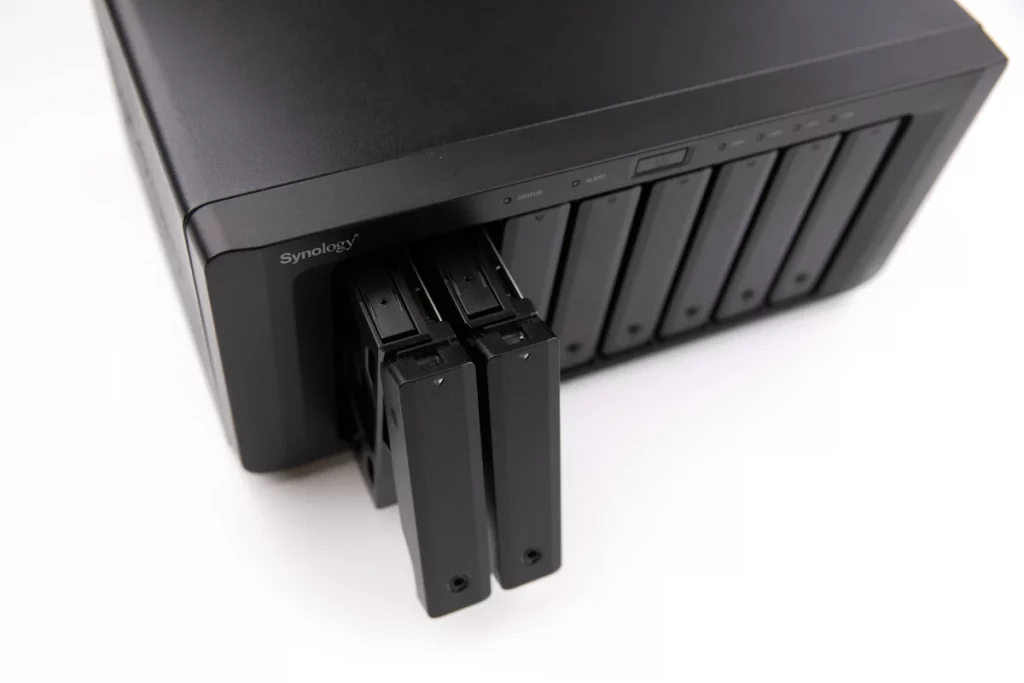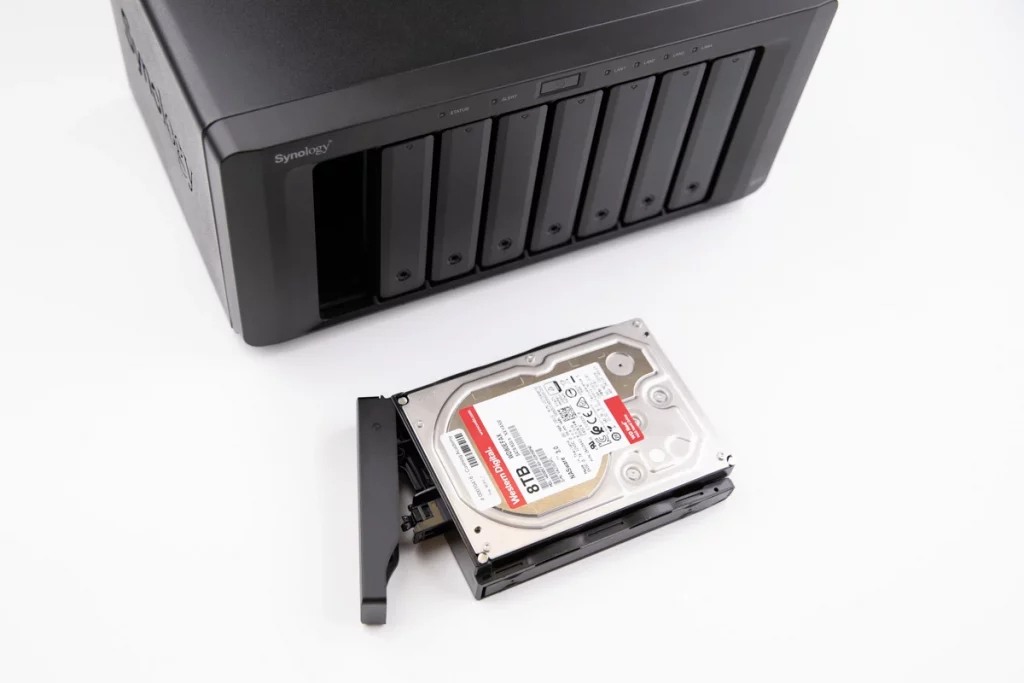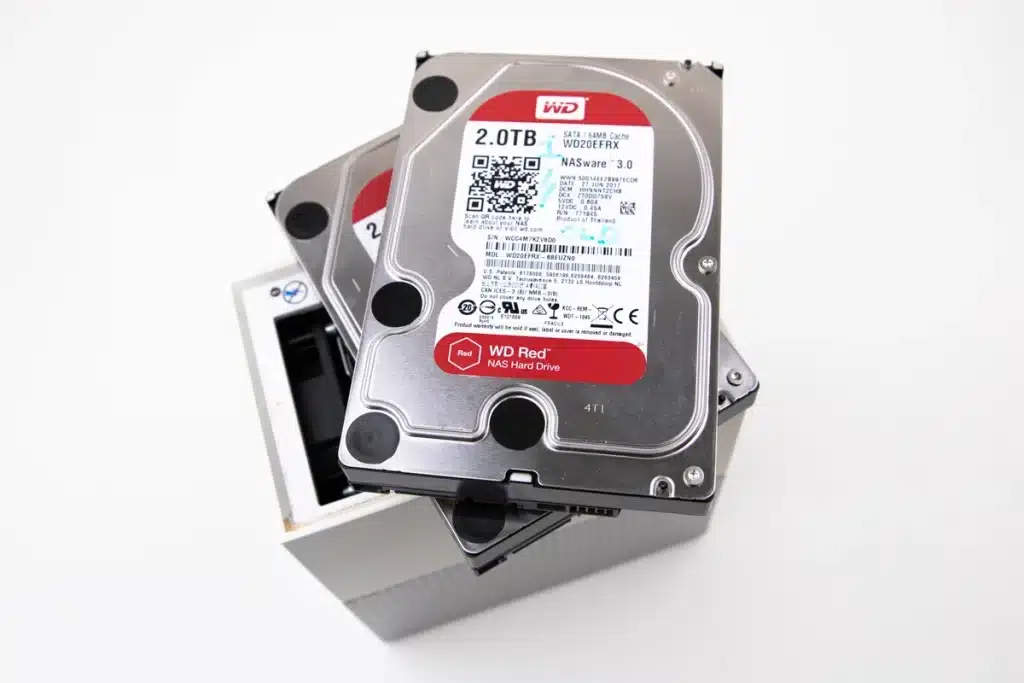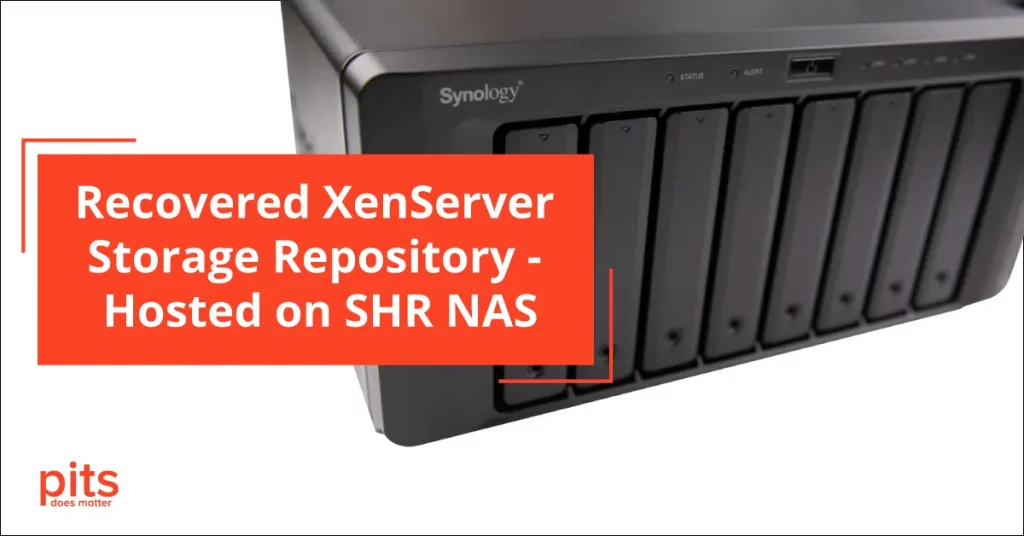Failed XenServer Storage Repositories can be a major headache for system administrators and IT teams. If the repository is not accessible, it can result in virtual machine downtime, data loss, and potential service disruptions. However, recovering an XenServer Storage Repository can be straightforward with the right tools and procedures.
In this case study, we will explore how our technicians were able to successfully recover an XenServer Storage Repository that was hosted on a SHR NAS device.
Introduction to XenServer Repository Issues
Recently, a business process management provider from Colorado had an issue with their XenServer storage repository. They were unable to connect to it due to missing LVM configurations. The storage repository was an iSCSI LUN hosted on a Synology NAS. Upon checking the NAS system, no problems were reported, but the drives appeared to be missing the LVM config, resulting in no partitions.
Something must be wrong with the SSD drives used in the NAS system. In order for XenServer to run smoothly, the SSDs need to be in good health and properly configured.
The IT team decided to recover the XenServer storage repository without losing any data or affecting the running virtual machines. But how can they recover it without damaging the SSDs?

The solution to this problem is using a professional data recovery services provider specializing in recovering data from SSDs. They searched online for a reliable recovery services provider. After a quick search, they found out about PITS Global Data Recovery Services.
After contacting us, our support team carefully listened to their problem and advised them to send the SSDs with the Synology NAS system to our lab.
"*" indicates required fields
Initial Diagnosis of 6 WD Red SA500 SATA SSDs
Upon receiving the SSDs and Synology NAS enclosure, our engineers performed a thorough evaluation to determine the extent of the damage and the chances of successful data recovery.
First, our team carefully inspected the SSDs for any physical damage or signs of wear and tear. Then, they connected the drives to our proprietary recovery tools and performed diagnostic tests to determine their overall health.
The results showed that all 6 SSDs had slow reading speeds and bad sectors, which is why Hybrid RAID could not properly configure the drives. It explained why no partitions were showing up on XenServer.
However, our engineers were confident they could recover the data from these damaged SSDs with their expertise and specialized tools.
After the evaluation, our team provided a detailed price quote with different service options depending on the priority level and turnaround time.

The customer approved the quote and chose an expedited service option to minimize downtime for their business operations.
Challenges Faced by the Team in Data Recovery
The IT team encountered several significant challenges during the recovery of the XenServer storage repository on the SHR NAS. The primary issue was the sudden inaccessibility of the storage repository, which contained critical virtual machine data. The SHR NAS, configured with SSDs, had experienced a failure that compromised data integrity. Additionally, the complexity of the XenServer environment, coupled with the specific RAID configuration of the NAS, required a highly specialized approach. The team needed to carefully analyze the SSDs to identify and rectify the faults without causing further data loss, all while ensuring minimal downtime for the client’s operations.
Sudden Inaccessibility
The storage repository, containing crucial virtual machine data, became unexpectedly inaccessible.
SSDs Failure
The SHR NAS, configured with SSDs, experienced a failure that jeopardized data integrity.
Complex Environment
The complexity of the XenServer environment and the specific RAID configuration demanded a specialized approach.
Fault Analysis
The team had to carefully analyze the SSDs to identify and fix the faults without further data loss.
Minimizing Downtime
Ensuring minimal operational downtime for the client was a critical challenge.
The Recovery Process of Xen Storage Repository
Our engineers started the recovery process by creating a sector-by-sector image of each SSD to ensure no further damage was caused during the recovery. Using advanced imaging technology, our engineers targeted the healthy parts of the WD Red SSDs, systematically bypassing the bad sectors to minimize the risk of data loss.

Technicians transferred all recovered data to the healthy WD Red SSDs and formatted them in the same sector size as before. Then, they manually reconstructed the Hybrid RAID. Synology Hybrid RAID is a complex system that requires extensive knowledge and experience to be configured properly.
Reconstruction took some time, but our engineers ensured that all the data was recovered accurately and in its original state.
After completing the reconstruction process, they tested the drives to ensure everything was functioning correctly. The result? Our team successfully recovered all data from the six damaged WD Red SSDs without any data loss. The XenServer storage repository was fully recovered. Hybrid RAID recognized the drives, and all partitions were visible.
Remote Customer File Verification session
To ensure the customer’s satisfaction, our engineers performed a remote File Verification session with them. During this session, the customer verified and accessed all recovered files and confirmed that everything was intact. The customer was extremely satisfied with our services and thanked us for our prompt and professional approach.
Following the session, we securely shipped the Synology NAS enclosure and the recovered WD Red SSDs back to the customer. They were able to reconnect their XenServer storage repository without any issues and continue their business operations as usual.
Preventive Measures for Data Loss in XenServer
Preventive measures are crucial to avoid future data loss in XenServer storage repositories on SHR NAS systems. Regularly updating your XenServer and NAS firmware can prevent software-related issues. Implementing a robust backup strategy, such as scheduled snapshots and remote backups, ensures data is duplicated and stored safely. Monitoring the health of your storage drives using built-in diagnostic tools can help detect and address potential failures early. Additionally, ensuring proper environmental conditions, such as temperature and humidity control, can prolong the life of your hardware and reduce the risk of data loss.
In this case, our customer’s XenServer storage repository was successfully recovered with all data intact, thanks to our advanced tools, techniques, and expertise in handling complex data recovery cases. It is essential to have a reliable data recovery services provider, especially when dealing with critical business data.
PITS Global Data Recovery Services has proven expertise in recovering data from storage devices, including SSDs, NAS, and Servers. Contact us today for all your data recovery needs.
Frequently Asked Questions
Can you recover data from all SSDs, including WD Red SSDs?
Yes, we specialize in recovering data from all types of SSDs, including WD Red SSDs, using advanced recovery techniques and technologies.
What should I do if my XenServer storage repository fails?
If your XenServer storage repository fails, it’s crucial to avoid making any changes or attempting to repair it yourself. Contact professional data recovery services immediately to prevent further damage or data loss.
How long does XenServer recovery typically take?
The duration of XenServer recovery can vary depending on the scope of the damage and the amount of data that needs to be recovered. Expedited service options are available for urgent cases.
Is it possible to recover data from a Hybrid RAID configuration, like in Synology NAS systems?
Yes, our engineers have extensive experience and expertise in recovering data from complex RAID configurations, including Synology Hybrid RAID systems.
Can you provide remote support for XenServer and WD Red SSD data recovery cases?
Yes, we offer remote File Verification sessions to ensure that all recovered data meets our client’s requirements and expectations before completing the recovery process.
Related Blogs

AS/400 Server Data Recovery Case – Bank Server Went Down

